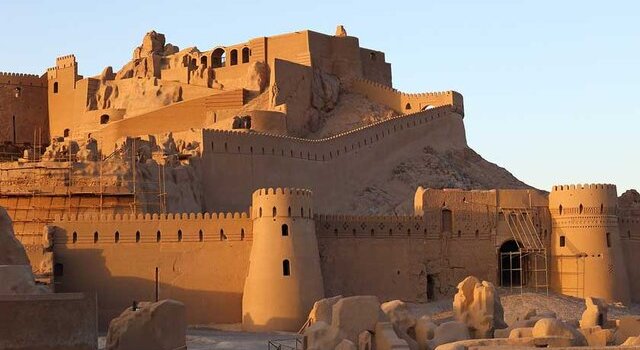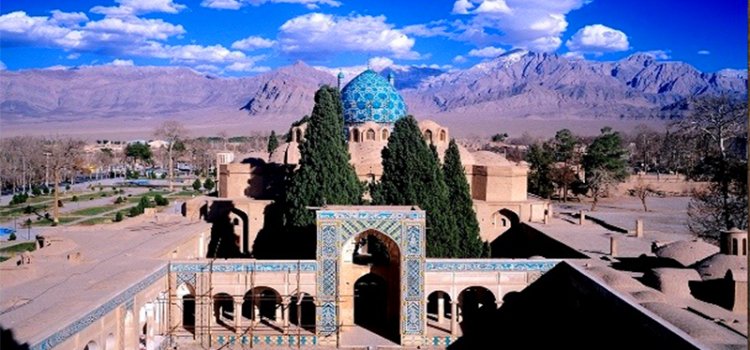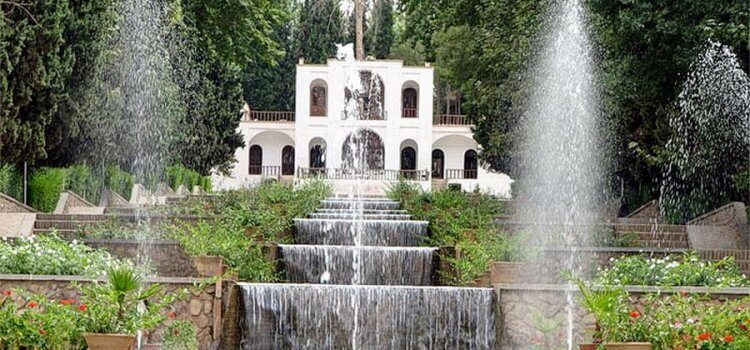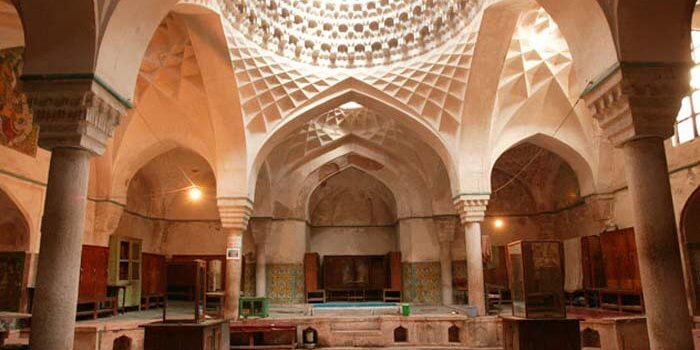Bam
Bam
The city of Bam is located 190 km east of Kerman province. It claims the largest mud-brick citadel in the world that is registered as a UNESCO world heritage site. It was located along the trade route from the Iranian central plateau to the Indian subcontinent and was an important military and trade center. The city’s main attraction is the Bam Citadel or Arge-e-Bam which dates back to the Achaemenid era. It was made of 3 concentric ramparts which the central one, dedicated to the governer, was higher. The second part was the military section and the third was residential.
Unfortunately, it was destroyed in a devastating earthquake in 2003 with about 45,000 death toll which was more than the half of population of the city. Some districts were reconstructed and nowadays people can visit them.
Shah Nematolah Vali
Shah Nematolah Vali
The tomb of Shah-Nematolah-Vali, 14th-century Sufi master and poet, head of the Shah-Nematolahi lineage, buried in Mahan, is a perfect example of Sufi mausoleums revered by the local population.
The main courtyard suggests 19th-century Qajar architecture. The plants and the flowers are in coherence with the architecture to evoke the spirituality of the place.
The tomb rests under the dome, the interior part of which retains its decor from the Safavid period (17th century).
A small cell in the corner of the main building is called Chele-Khane and was used during the spiritual seclusion of the Sufis. A courtyard located at the back also presents the beautiful architecture, seeming to welcome the pilgrims coming from far away.
Sufism is the esoteric and mystical view of Islam. The conquest of the Mongols in the 13th century favored the expansion of this religious movement that remained isolated from political life. This movement is currently socially marginal in Iran.
Their virtues as poets, their rhetoric, and even sometimes the superhuman qualities attributed to them make them the object of veneration and sympathy on the part of their supporters.
Shazdeh Garden
Shazdeh Garden
Shazdeh (prince) garden is located on the ring road of Mahan, 35 km southeast of Kerman. It was built during the Qajar period, in 1870. It is one of the nine Persian gardens registered as world heritage by UNESCO.
The garden is located at the foothills of the mountains and enjoys a constant stream of water. The pavilion at the high end of the garden is its architectural heart. The water descends on a natural slope in the eight basins arranged in a staircase structure
In addition to the animation of the water jets, the stream irrigates the trees and flowers to make the garden appear like a hanging garden.
At the entrance, a pretty building delimits the palatial enclosure of the garden of arid nature that surrounds it.
GanjaliKhan Bath
GanjalKhan Bath
in Kerman is part of the Ganjali Khan complex which was built in the 17th century, during the Safavid era, and transformed into an anthropological museum since 1971.
GanjalKhan Bath
in Kerman is part of the Ganjali Khan complex which was built in the 17th century, during the Safavid era, and transformed into an anthropological museum since 1971.
The paintings, the tiling, the stucco work, the arches, and the calligraphy are among the beautiful ornamentations that complete the exceptional architecture of this Hammam.
From the bazaar, a curved corridor gives access to the Bineh (a space that is normally characterized as a semi-hot, semi-humid area) and to avoid a direct view of the interior and to keep a constant temperature.
There is a difference in height around the Bineh so that you can take off your shoes and get ready before heading to the hot section.
The Bineh offered separate spaces according to the profession of the people, traders, employees, and religion. Everyone had their part.
An intermediate passage between the Bineh and Garmkhaneh (a place washing process takes place and is normally characterized as a hot, humid area) is called Miandar.
In the Garmkhaneh, there are wax mannequins showing washing and rinsing.
The place reserved for the governor had a sort of sundial.
The penetration of light through the onyx indicates sunrise (some people entered the public hammam early in the morning to bathe, an ablution ritual that was done before morning prayer).
A model shows the practice of phlebotomy that was done in the past in Hammams. The removal of decayed teeth was going there as well.
In another place, there are cabins for waxing with the famous depilatory powder called Vajebi.
The staging of a massage is a dream … A well-being that we did not deprive ourselves of.




